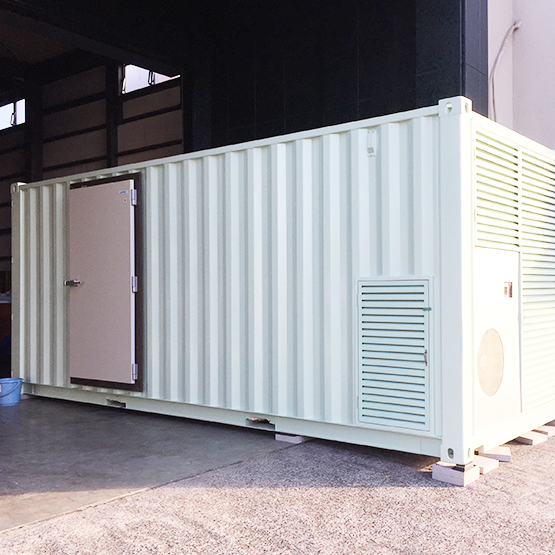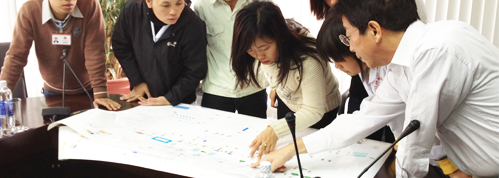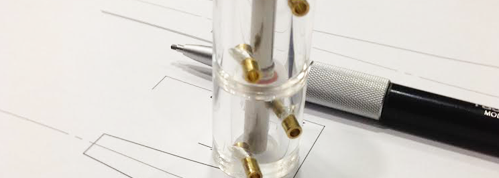Custom-made simulator for each factory is developed for energy auditing integrating production process. Optimal solution is provided for huge cost saving.
New innovative technologies from Japan have been developing beyond simple application of existing techs and beyond simple energy saving.
Background
Based on Sakashita's 32-years’ experiences at Mayekawa MFG. (MYCOM) as its lead engineer, he established Ai- Ai Energy Associates in 2009. Ai-Ai Energy Associates is a vehicle for consulting, and for developing/materializing innovative technologies, esp., for developing countries.
Innovative New Technology Development
(1) Humid but defrost-free refrigeration technology (e.g., 0°C with 99%-humidity), controllable for temperature and humidity independently.

This technology overcomes drawback of defrosting—bottleneck of this kind—and achieves much better energy efficiency.
The technology can keep foods (fruits/vegetables, cooked ones, etc.) and flowers fresh for several months, typically.
Now, several refrigerator types are on designing/manufacturing stage in Japan, for levelling the peak demand of foods/flowers.
In addition, we collaborate with partners in developing countries—post-harvest loss is around 50% —for construction of “cold-chain” of vegetables/fruits. This technology is equipped into a standardized container to make a ‘mobile’ refrigerator/storage with around 40,000 USD investment only. This initiative enables poor Lao farmers to utilize Bangkok market, for example.
(2) Ultra-compact-size Adsorption Refrigeration Technology

Adsorption refrigerator is the only technology to utilize low temperature waste heat (e.g., 60°C) to make a cold water (e.g., 10°C) to date. However, the conventional one is bulky, heavy and expensive and has not been well commercialized.
I developed a new type of adsorption refrigeration technology from completely different aspect and overcome all drawbacks.
The core 20W module is only 50x50x5 mm. Larger units (e.g., 3.6 litre for 1kW unit) can be cascaded by these core modules.
We need some more time for commercializing this technology, but we expect that most of car air- conditioners will utilize this technology in near future. This technology has diverse application areas requiring cold heat.
Additionally, several innovative technologies are under development. For example, low-cost but higher- quality energy-efficient instant-coffee production system is for low-income farmers in developing countries. Please refer the relevant web page in Japanese.
We recognize our role is to materialize these technologies and pave the way to less energy/carbon development, esp., in developing countries.
-
Virtual Factory Simulator (key analytical tool for consulting)
In-depth factory energy auditing requires advanced skills/knowledge specific to its products/technologies. Especially, food factories have a variety of products and diverse configuration. Therefore, usually, energy auditing focuses only on utilities (power/steam/water) independent of production processes and its quality.
One of my major expertise is the factory energy auditing ‘integrating the production processes’ by developing factory-specific simulator—called Virtual Factory. A factory itself is simulated thermodynamically with its production and utility processes.
First, the status-quo is simulated by thorough on-site inspection; secondly, the proposed solution is constructed/simulated on it. The factory owner/engineers can easily grasp the factory’s material and energy flows visually/quantitatively for baseline (status-quo) and the proposed system.v
We believe that no one else can undertake such auditing by custom-made simulator for complicated factories.
Usually, around 20–40% of energy cost saving with 3–5 years payback period is realized through this auditing.
In addition, we should emphasize hidden important benefit—improving the products quality. This is realized by more stringent/proper energy management. We see many factories have been enjoying such ancillary (but more important) benefit for their core businesses.
Geographical Focus
Overall, we target developing countries, esp., south-east Asian economies, such as Vietnam, Thailand, Cambodia, Lao PDR and Philippines, where I have collaborators and undertook many factory energy auditing. Other developing countries such as Uganda are in my scope, especially for cold-chain projects using the defrost-free humid refrigeration technology.
Japan is also focused for a variety of applications of the above defrost-free humid refrigeration technology since this technology is first-of-its-kind and has a potential to change the business practices revolutionary.
We plan to find out partners worldwide to apply these technologies from various aspects.
Impacts To Date
For “Virtual Factory”, we have undertaken many energy auditing for factories in Japan, Asian and Central/South American countries.
In addition to Sakashita's achievement at Mayekawa MFG for 32 years—for example, all beer factories in Japan, we have undertaken the audit for more than 50 factories in these 9 years at Ai-Ai Energy Associates; some are funded by Japanese public organizations and some are purely private initiatives.
Most of them are food industry factories, such as beer, sugar, vegetable oil, refreshing drinks including orange juice, liquor, coffee, cereal, bread, ham, fisheries processing including canning, instant noodle, bio-ethanol, salad dressing, jam; while others like painting, tar, etc. are also included.
For new technology development, “ammonia fiber explosion technology for ethanol production” using cassava pulp has completed and waiting for investment for large-scale demonstration for commercialization.
“Binary power generation technology for geothermal hot spring resources” first achieved the power generation efficiency target (7%) set by NEDO.
As stated before, “defrost-free humid refrigeration technology” is about to start its commercial sales with several partners.
“Ultra-compact-size adsorption refrigeration technology” requires some more time for commercialization, although the theoretical basis and prototype of core module has been demonstrated.
THE WAY FORWARD
We plan to shift my activities from factory energy auditing to new technologies development/materialization gradually because the latter has much larger potential.
Since our main interest is in low-carbon development in developing countries, next promising initiative is the cold-chain projects using container refrigerator with defrost-free humid refrigeration technology.
For this initiative, I am planning to design a GPS-based information system of the locations and stored/carried products of the ‘mobile refrigerators’ to be integrated to the market information of the products in the future. This system enables to establish the optimal distribution system linking to the economy.
In addition, commercialization of the “ultra-compact-size adsorption refrigeration technology” allows the society to utilize discarded waste heat in a variety of application areas. We are seeking for collaborators to work with in various areas in Japan and/or in other countries. We are also planning to develop a refrigerator for off-grid households using this technology.
VIDEO MESSAGE FROM CEO SAKASHITA
Our Technological Strength
(Number of Patent Holdings)
Heat utilization;
Heat-Pump area patents
our team
| Shigeru Sakashita | CEO |
|---|---|
| Tetsuro Toma | Director (Overseas business) |
| Shouichi Hashimoto | Director (IT media) |
| Masahiro Wakabayashi | Auditor (Machine and building) |
| Kenzo Horie | Manager (brewing, machine) |
| Yasuo Torikata | Manager (bio-technology, agriculture) |
| Masato Miki | Advisor |
| Yasushi Suzuki | Advisor |
| Naoki Matsuo | Fellow |
| Daisuke Tsujimoto | Fellow |


